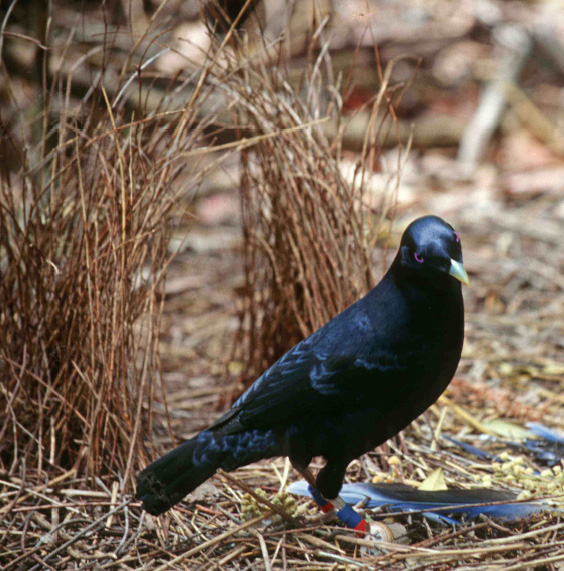|
|

RESEARCH PROGRAM |
| |
| GENETIC BASIS & GENOMIC CONSEQUENCES OF INTENSE SEXUAL SELECTION IN BOWERBIRDS |
| |
| Decades of research has unequivocally shown that sexual selection, through mate choice and intrasexual competition, is responsible for the evolution of elaborate displays and exaggerated weapons. Despite this clear consensus, however, our understanding of how sexual selection operates is limited by the lack of data on the genetic basis and the genomic consequences of sexual selection. This short-coming is critical because the genetic architecture of sexually selected traits will influence their evolution and maintenance, and, in many systems, indirect genetic benefits are the likely driver of mate choice. In collaboration with Gerald Borgia, who has worked on bowerbirds for nearly 40 years (and was my graduate advisor), we are integrating whole genome sequence data with detailed information from a 17-year field study of mate choice in satin bowerbirds Ptilonorhynchus violaceus to explore the genetics of sexual selection. |
| |

| |
| Male bowerbirds are known for their unique courtship displays, which involve building stick structures on the ground decorated with objects that are difficult to collect and defend from marauding males. Here is a male satin bowerbird that we monitored with an automatic video camera in Wallaby Creek, NSW, Australia. |
| |
| |
| Back to Current Research Page |
| |
| Back to Uy Lab Home |
|
|
|
 |
